Dinghy test with video: The 10 inflatable boats in detail
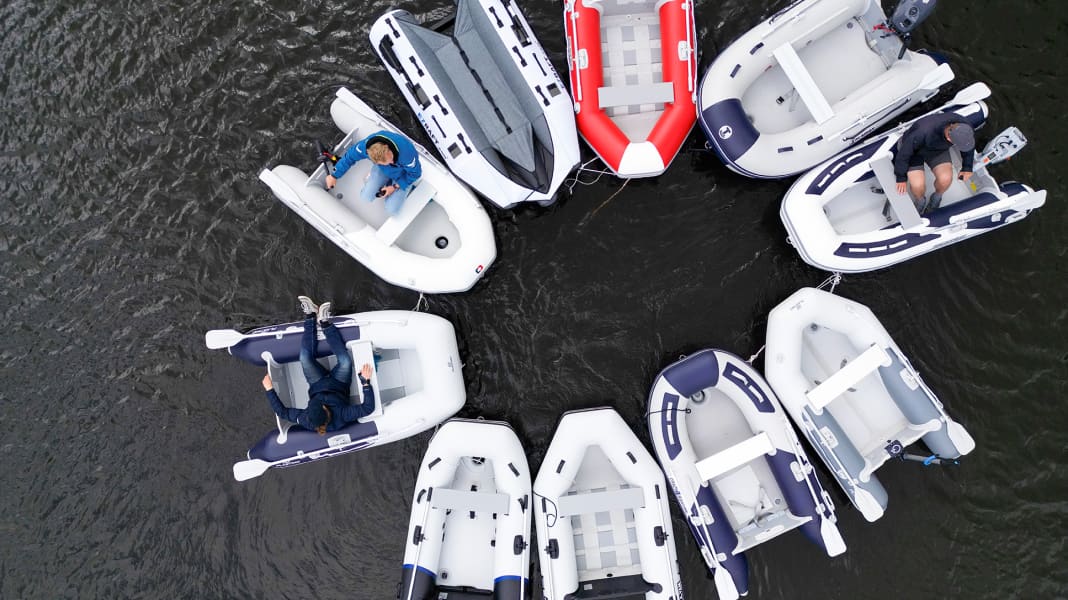
Jump directly to a dinghy:
Here to the test video!
Dinghies with high-pressure floor
Osculati 240 air floor
800 Euro
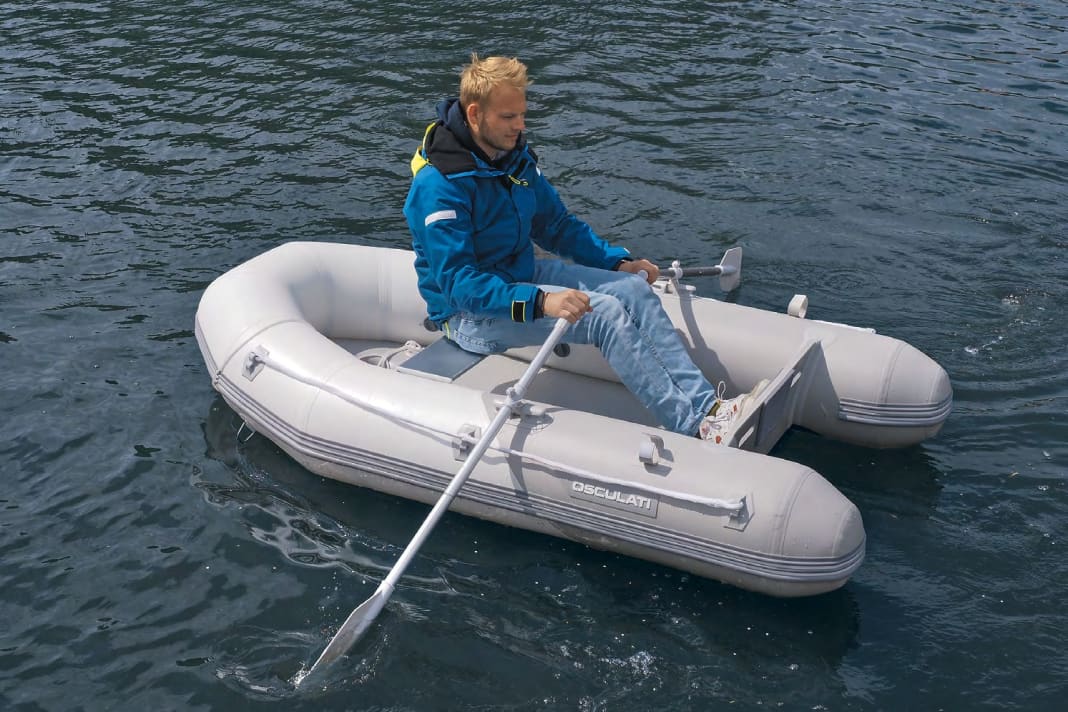




The Osculati inflatable boat scores points with its large cockpit, which is only surpassed by the Talamex model. The seating position when rowing is very good. Unfortunately, with a 4 hp burner it did not quite glide. At 16 kilometres per hour it sucks in the stern. The price is fair.
Data and evaluation

Remarks
- + Large interior
- + Best rudder characteristics
- + High stability
- + Towing very good
- - No full glide
Plastimo Fun II PI230 VB
1,517 Euro
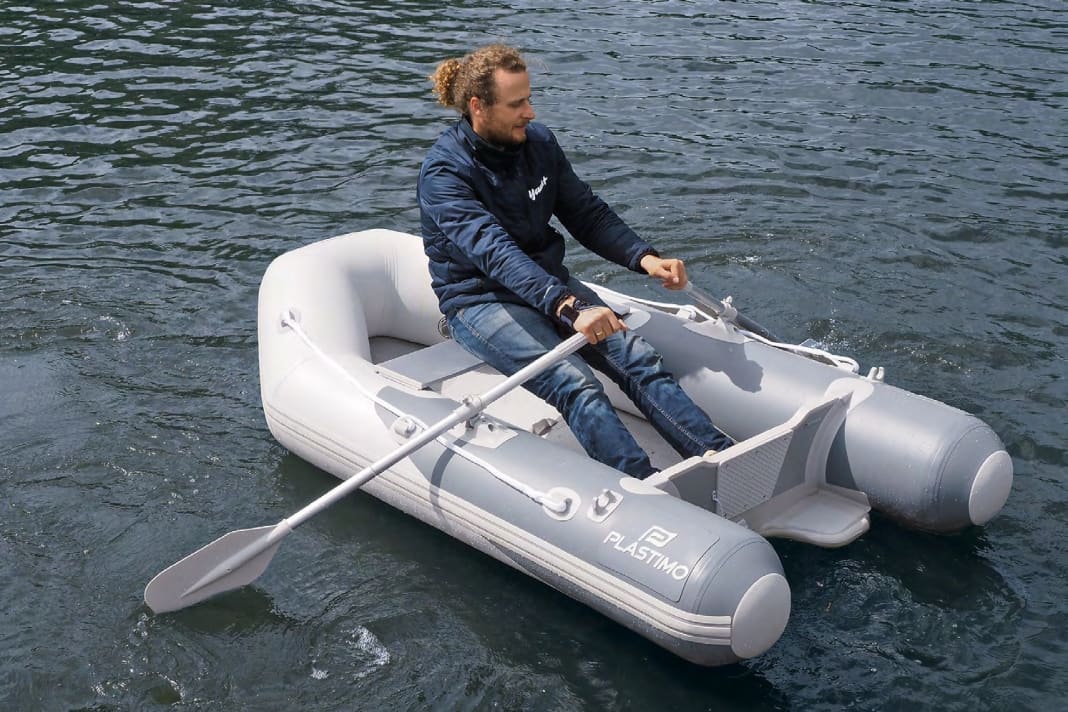




The integrated high-pressure V-bottom ensures good planing and clean towing, but also has disadvantages: The boat is very tippy and water collects in the cockpit. This finds its way into the dinghy in small quantities when rowing via the deeply submerged bow. The Plastimo Fun II PI230 VB is, for example available here.
Data and evaluation
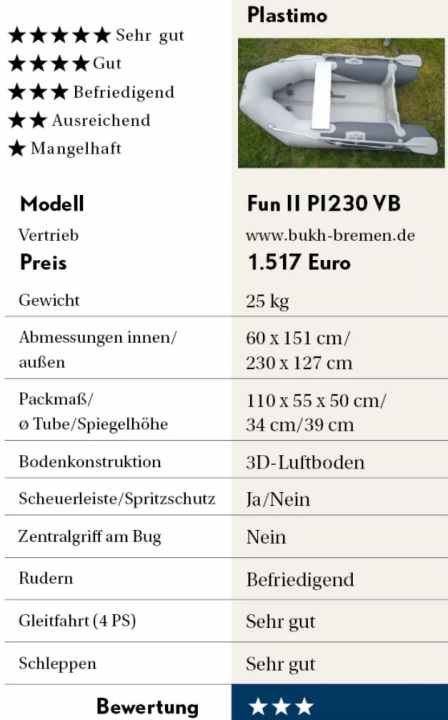
Remarks
- + Very good seating position
- + Very good towing behaviour
- + Fast gliding travel
- - Bug dips heavily
- - Very tippy
Seatec Aerotend 240
1,200 Euro
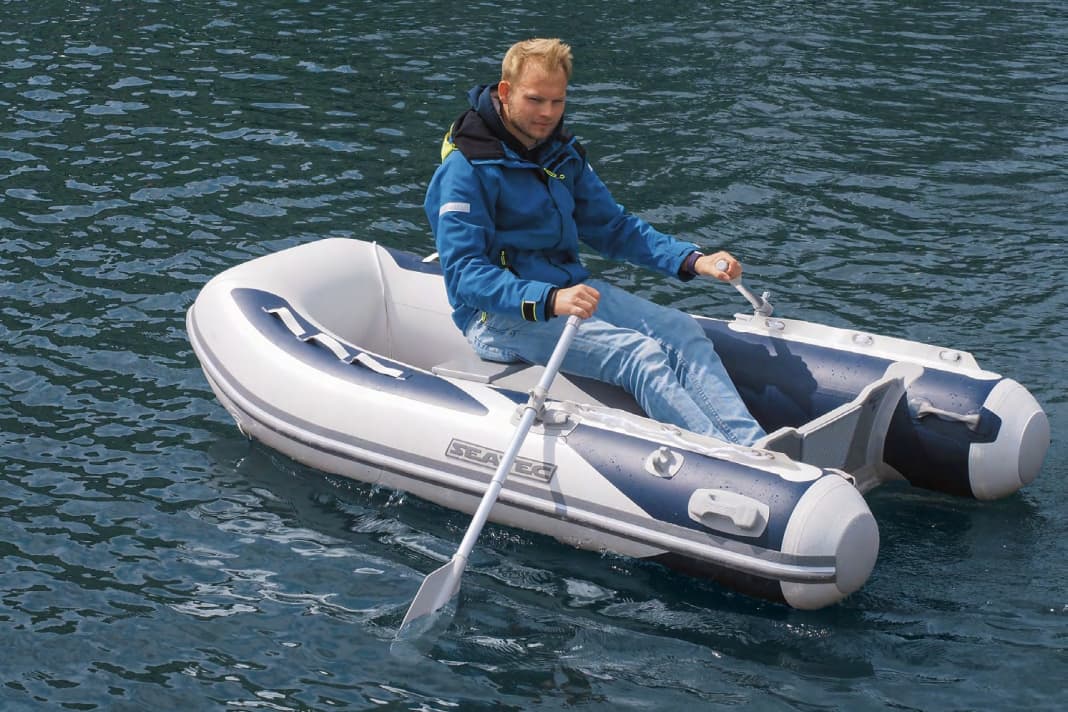




The high-pressure V-bottom is a fixed part of the hull and works better here than on the Plastimo Fun: not so tippy, better flotation. It sails straight ahead well when rowing and can be manoeuvred perfectly. However, the straps are a little short. Very good overall result. But the price is high.
Data and evaluation
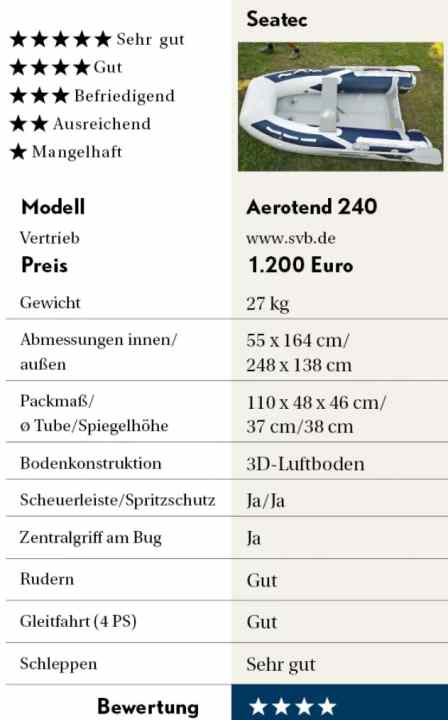
Remarks
- + Good seating position
- + Very good towing behaviour
- + Good motoring
- + Practical handles
- - Straps a little short
Talamex Comfortline TLA 250
1,169 Euro
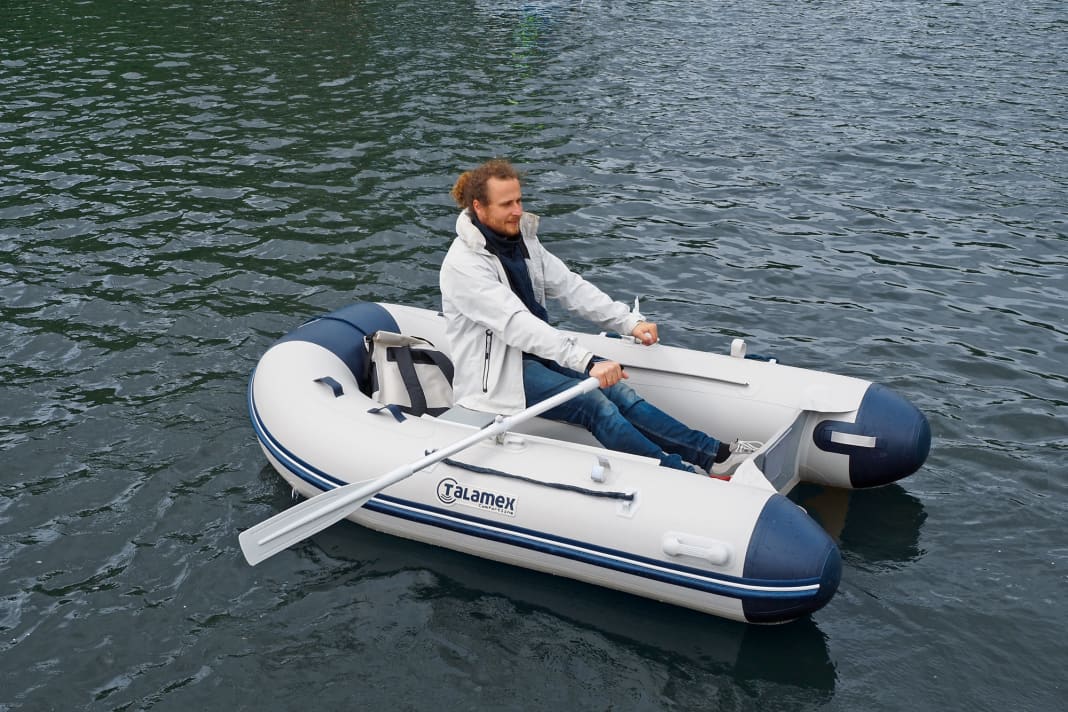




The largest cockpit and the thickest hoses ensure very high stability, but also a lot of weight. This makes the Talamex dinghy feel like a larger model. It runs very well under motor, can be towed cleanly and rows excellently with larger oars (oars from Osculati). The Talamex Comfortline TLA 250 is, for example available here.
Data and evaluation
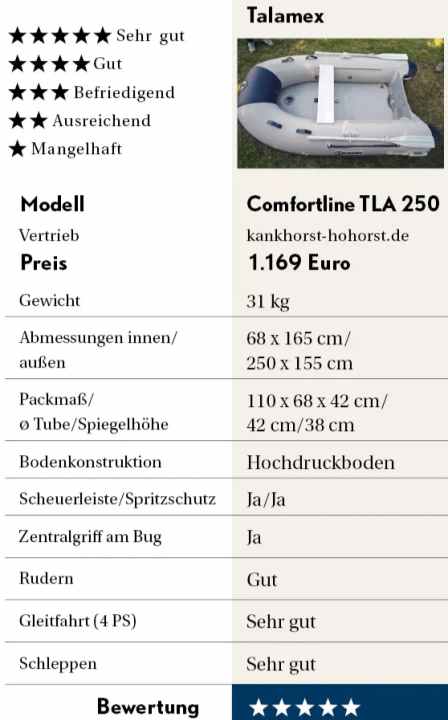
Remarks
- + Largest dinghy in the test
- + Safe gliding travel
- + Good rudder characteristics
- + Quite heavy at 31 kilos
- + Straps too small
Crazy4Boating 250 AMF
779 Euro
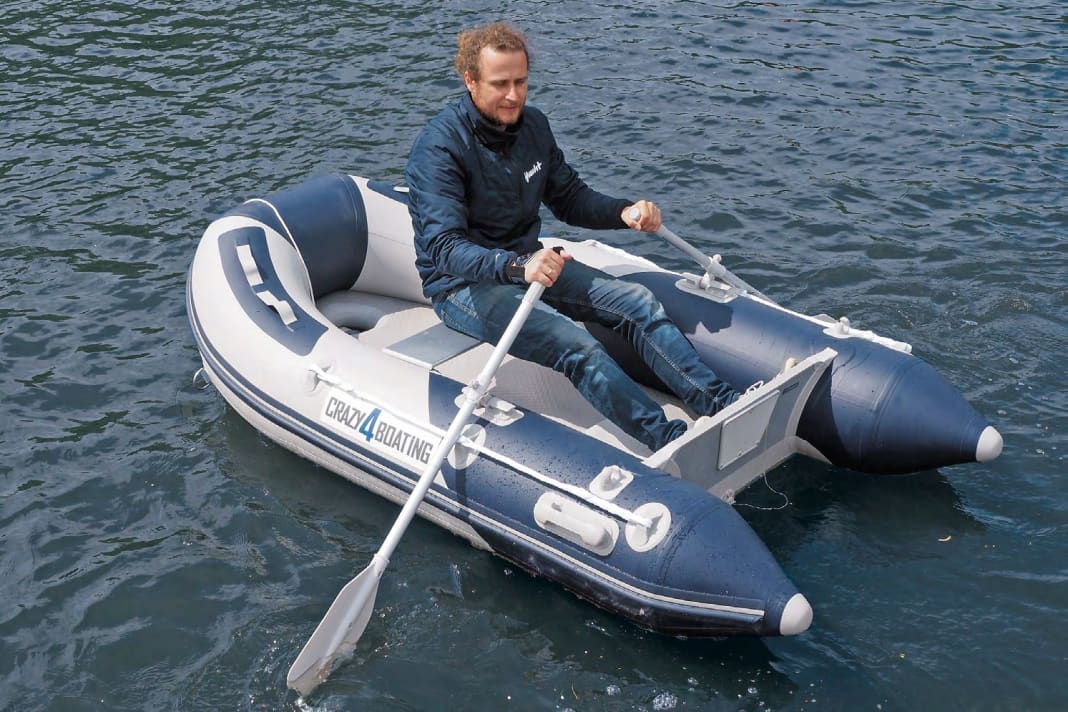




The cockpit of the Crazy4Boating dinghy is the third largest. The dinghy is correspondingly heavy at 30 kilograms. The seating position is good and, apart from a little drift in the bends, it is easy to manoeuvre and tow cleanly. When rowing, an eyelet on the outside is a considerable hindrance.
Details and rating
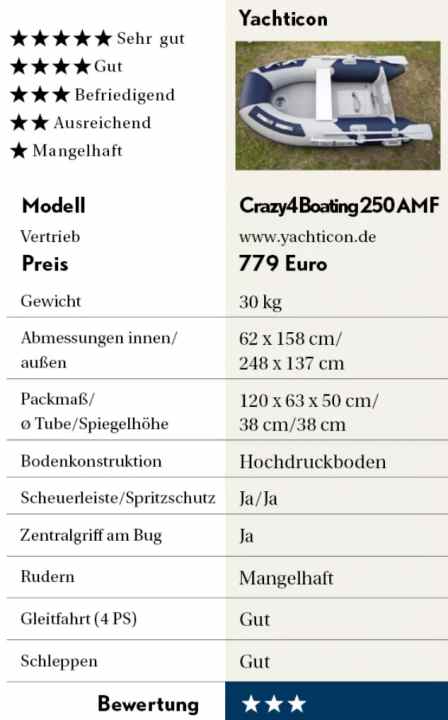
Remarks
- + Large boat, lots of space
- + Good seating position
- + Good glide
- - Quite heavy
- - Eyelet interferes with the belt when pumping
Yamaha 240 Air
870 Euro
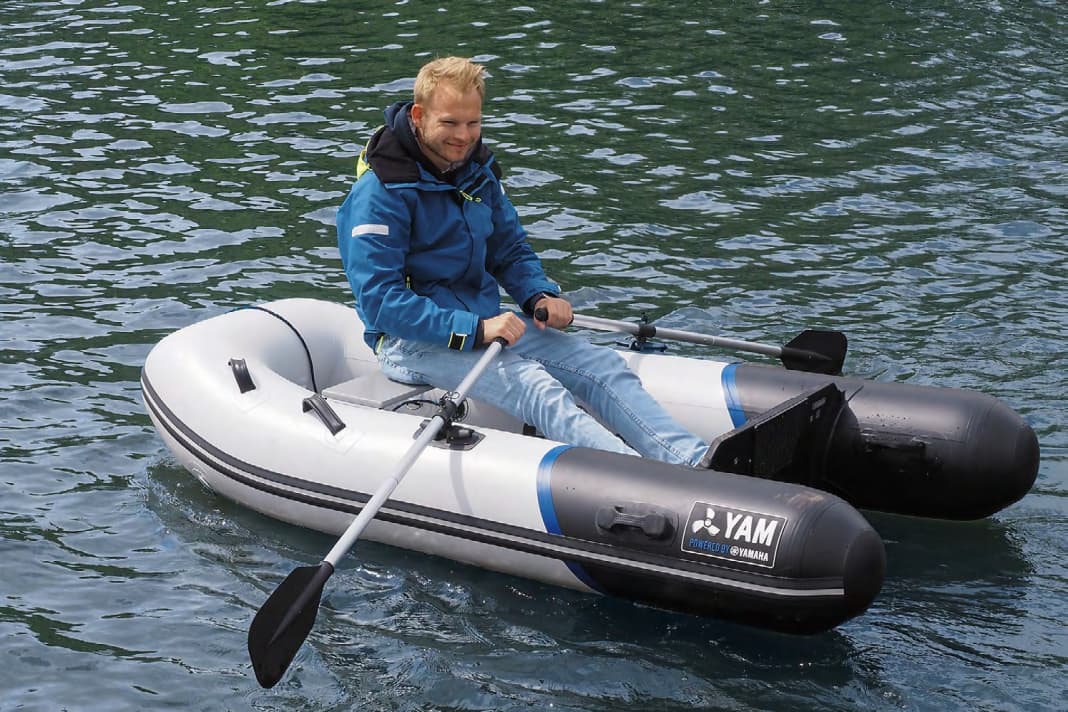




The 240 Air is very narrow and correspondingly tippy. The seat is too far forward and the straps are too long. As a result, you can hardly get the paddles out of the water and bump into your own knees. With 4 hp, the dinghy does not glide. The long aft tubes are striking.
Details and rating

Remarks
- + Towing very good
- - Uncomfortable sitting position
- - Belts too long
- - Does not start to glide
- - Very tippy
Dinghies with slatted floor
Plastimo Raid II P240SH
1,036 Euro





The Raid II from Plastimo scores points for its high stability, which is achieved by the width extending to the bow. Rowing requires little effort, the seating position and swimming position are good. The slatted floor offers a secure footing thanks to the wide boards. However, there are drawbacks when towing. The Plastimo Raid II P240SH is, for example available here.
Details and rating
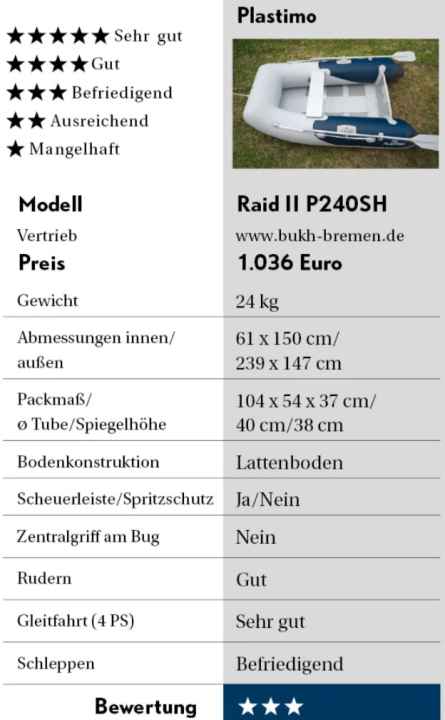
Remarks
- + Large volume (wide bow)
- + Glides on quickly
- + Stable stand (wide slats)
- - Towing only satisfactory
- - Little lateral guidance
Seatec Nemo 230
430 Euro
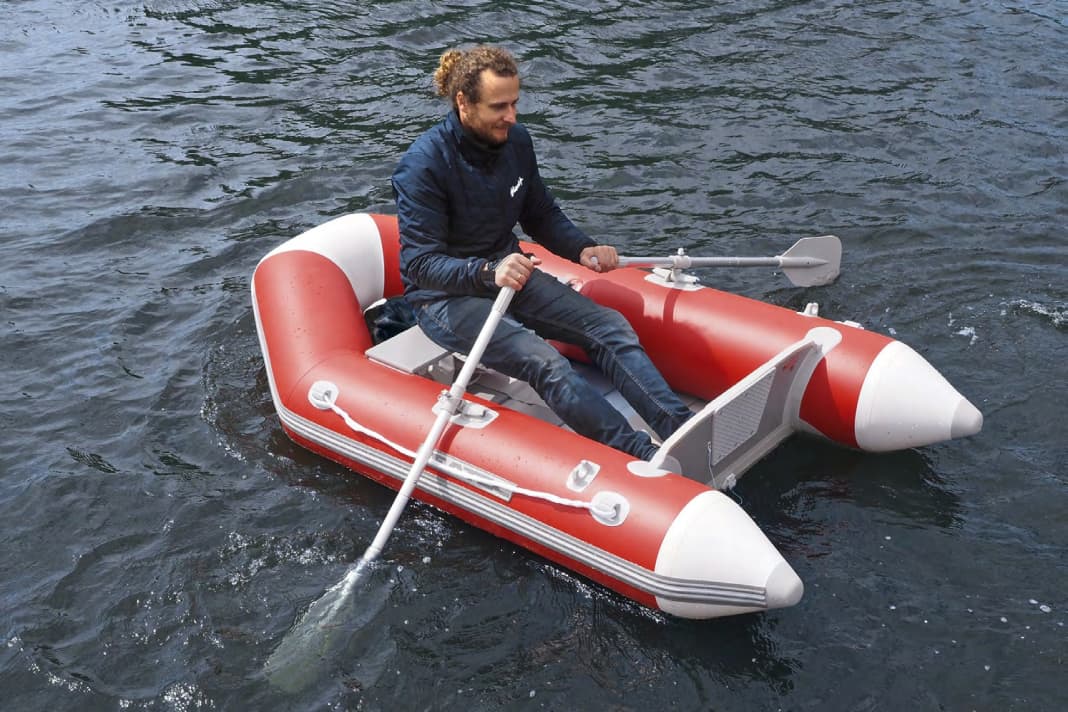




The Nemo is inexpensive, small and light. However, it also has some limitations: When rowing, a lot of spray water comes over the bow, the straight-line stability is not convincing. Even under a 4 hp outboard motor, a lot of water splashes and the dinghy bucks a lot when towing. The bench seat did not hold.
Details and rating
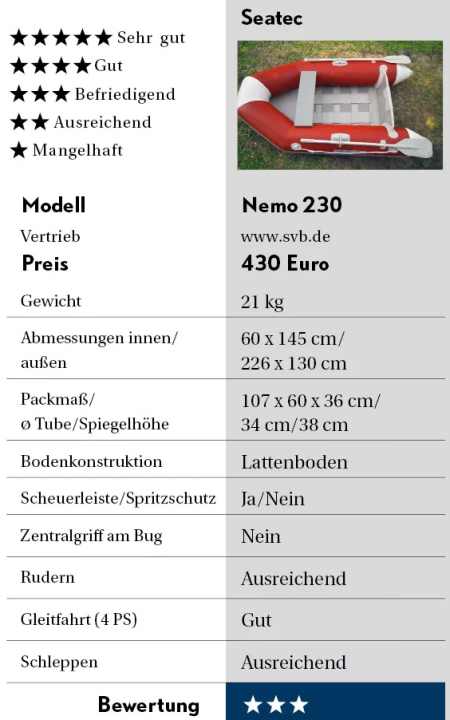
Remarks
- + Small and light (21 kg)
- + Favourable price
- - Splash water over the bow
- - Towing sufficient
- - Bench seat breaks
Yamaha Tender 240 T
630 Euro
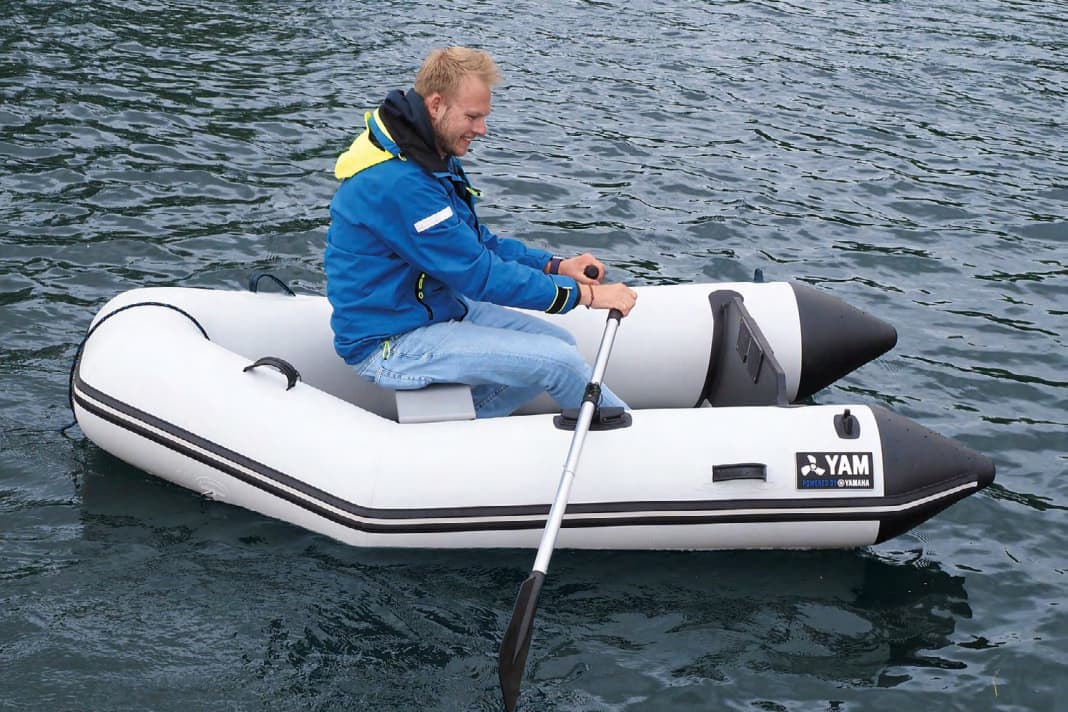




The Yamaha Tender 240 T is very simple and was not convincing in the test. Unsafe standing on narrow boards, great resistance when rowing, no planing possible because the transom is so high that the motor sucks in air. In addition, the transom moves significantly when accelerating.
Details and rating
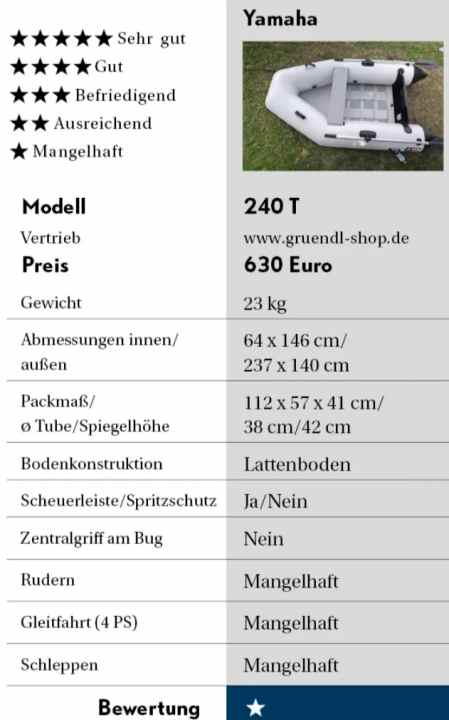
Remarks
- - Mirror too high
- - Does not row well
- - Unsafe stand
- - No gliding possible
- - Unsteady towing
EZ Raft
880 Euro





The EZ Raft is the exotic model in the test selection. The vehicle is extremely light and packs down spectacularly small (77 x 39 x 29 centimetres). The seating position is rather uncomfortable and there is no cockpit in the conventional sense. On the other hand, it offers high stability thanks to very large tubes, and rainwater simply runs off.
Details and rating
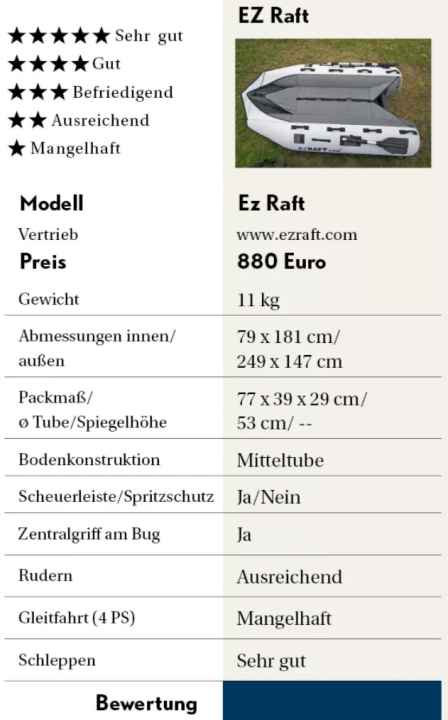
Remarks
- + Extremely light (11 kg)
- + Spectacular pack size
- + Electric pump as standard
- - No gliding possible
- - Curved seating position

